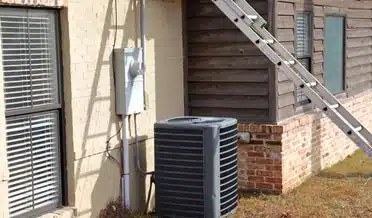New AC Installation FAQs
New AC Installation: What You Need to Know Before You Buy
If you find yourself needing a new New AC Installation, a.k.a., your HVAC system, you have some exciting choices about features that will impact comfort and health for many years to come. Most well-maintained HVAC systems last 20-25 years, so expect to keep this system around for a while. In order to prepare you for this important decision, here is some basic information to help you.
New AC Installation: Two Basic Systems
While it has been around for decades internationally, the mini-split ductless air conditioner system is gaining traction over central heating/air systems in the U.S. Here is a short description of the two types of systems.
- The biggest difference between the two systems is . . . ducts. Ductless systems provide both heating and cooling using very similar technology, but the delivery system is via a wall-mounted unit instead of floor vents. These wall units are quieter than a central air system. Each room has a separate thermostat, allowing for zone heating and cooling. These systems are very energy efficient and can save money each month. They are especially useful when adding rooms or renovating older homes without existing ducts. Since mini-split systems use heat pump technology, they struggle to produce heat when the temperature drops below 320
- Traditional central heat/air systems are good, efficient systems and can be found in most homes in the U.S. Typical central systems will have component parts indoors and outdoors. The blower motors on central systems move a lot of air—the entire volume of your home circulates every few minutes. While the air is moving, it filters well. One system can cover large areas, but creating zones is usually not possible. Central heat will use heat pump technology, just like the mini-split system. However, an auxiliary heat source, either electric or natural gas, handles low temperatures.
New AC Installation Proper Sizing and Ratings
Both mini-split and central systems are sized using the same method. A technician will complete a load calculation to determine size; square footage, insulation type, window and door openings, and other factors that are entered into an algorithm. The heating need is measured in British Thermal Units (BTUs) and air conditioning is measured in tonnage. Larger numbers are not better or worse, they just measure the need. An important fact: for a number of reasons your new system might not match the size of your old system.
Ratings measure the efficiency of heating and cooling functions. The basic information on New AC Installation ratings is:
- Air conditioner efficiency is measured in SEER or Seasonal Energy Efficiency Ratio. The minimum SEER rating is 13 and the (current) maximum rating is 22: in order to qualify as EPA Energy Star, the SEER rating must be 14.5. Energy efficiency will cost more upfront and be repaid for lower bills over time.
- The amount of energy lost by electric furnaces is negligible, so they are considered 100% efficient. Gas furnaces receive an Annual Fuel Utilization Efficiency rating that measures the percentage of fuel energy successfully captured for indoor heat. Watch for AFUE ratings between 90 and 98(%). Again, energy efficiency costs more with the purchase but is recouped with lower utility bills.
Features to Explore
The basic technology for heating and air conditioning has been around since the 1960s, but engineers keep improving system components. Some improvements to watch for include:
- Blower motor technology. Mini-split systems have very small quiet blower motors and room occupants might not notice the noise. Central systems have larger motors and in the past, the noise was very noticeable. New technology includes variable speeds and whisper-quiet technology.
- Air Filters. Mini-split systems may come with washable air filters and save money on the cost of replacing filters over the years. Watch for systems with better air filtration: look for a MERV rating on available filters—the higher the number the better.
- UV Lights. Ultraviolet light will neutralize organic airborne particles, such as pollen, dust mites, mold spores, bacteria, and viruses. This is a definite plus.
- New thermostats allow you to schedule regular temperature changes. This adds comfort and helps save on the energy bill. Programmable thermostats allow you to set the schedule and forget it. Smart thermostats include a phone app that allows you to make changes on the move.
Are you researching a New AC Installation? We can help!
Schedule your free New AC Installation consultation by calling AllCool AC & Heating at 281-238-9292 or contact us via email.
